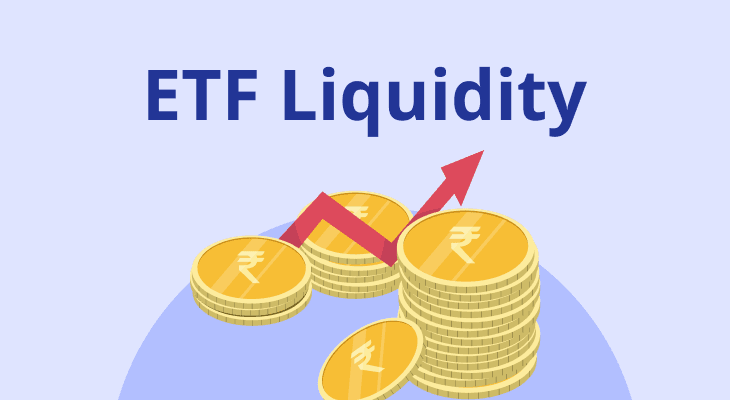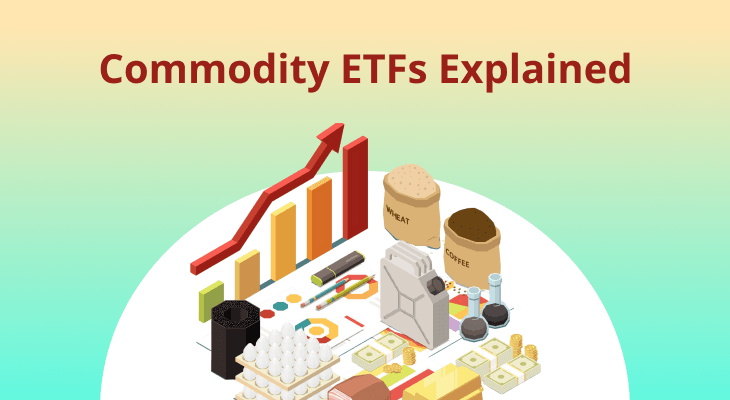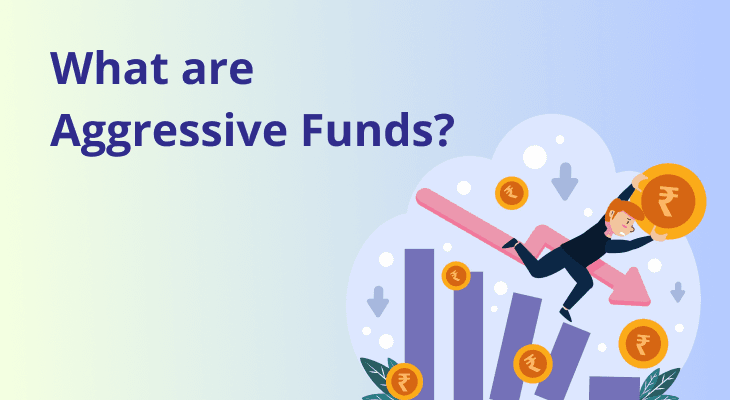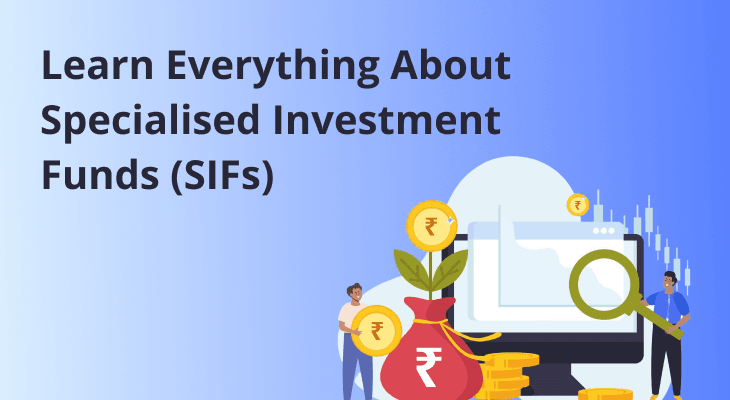
ETF Liquidity: Understanding Bid-Ask Spreads and Trading Volumes
Exchange-Traded Funds (ETFs) have become a popular investment vehicle in India due to their low costs, flexibility, and transparency. However, when it comes to trading ETFs efficiently, many investors overlook a crucial factor — liquidity. If you’ve ever wondered why your ETF buy or sell order didn’t execute at your expected price, chances are it had something to do with ETF liquidity, bid-ask spreads, or trading volumes.
Understanding these concepts can help avoid hidden costs and get the best value out of your ETF trades. In this guide, we’ll walk you through everything you need to know about ETF trading, including bid-ask spreads, the role of trading volumes, and the influence of market makers. This is especially relevant if you are selecting ETFs based on volume data or looking to minimise costs in low-liquidity ETFs.
What Is ETF Liquidity and Why It Matters
ETF liquidity refers to how easily and quickly an ETF can be bought or sold in the market without causing a significant impact on its price. It determines your ability to enter or exit a position at the desired price and with minimal slippage.
It's important to note that ETF liquidity is influenced by two primary factors:
- Primary Market Liquidity: This comes from the ETF issuer and Authorised Participants (APs), who can create or redeem ETF units in large blocks. This ensures that the ETF price remains close to its Net Asset Value (NAV).
- Secondary Market Liquidity: This is the liquidity you see on the exchange—how actively the ETF is being traded by buyers and sellers. This affects how easy it is to trade the ETF at fair prices during market hours.
Why it matters:
- Low liquidity can lead to wider spreads between buy and sell prices, increasing trading costs.
- High liquidity improves price discovery, making sure you trade closer to NAV.
- In thinly traded ETFs, you may struggle to buy or sell large quantities without impacting the price significantly.
Therefore, liquidity plays a vital role in your ETF trading experience, and ignoring it could directly affect your returns.
Bid-Ask Spread: What It Tells You
The bid-ask spread is the difference between the highest price a buyer is willing to pay (bid) and the lowest price a seller is willing to accept (ask). In simple terms, it's the cost you pay to execute a trade immediately.
Let’s understand it better with an example. Suppose you're trading an ETF with the following parameters.
- Bid Price (highest price a buyer is willing to pay): ₹ 190
- Ask Price (lowest price a seller is willing to accept): ₹ 200
Bid-Ask Spread = Ask Price - Bid Price = ₹ 200 - ₹ 190 = ₹ 10
To calculate the percentage spread, which reflects the trading cost:
% Spread = (Ask - Bid) / Midpoint × 100
Midpoint = (₹ 200 + ₹ 190) / 2 = ₹ 195
% Spread = (₹ 10 / ₹ 195) × 100 = 5.13%
Why it matters in ETFs:
Tighter spreads mean better liquidity and lower trading costs. On the other hand, wider spreads, like the one in our example, indicate low demand, less competition among buyers/sellers, and potentially inefficient pricing.
Several factors influence the bid-ask spread:
- Liquidity of Underlying Assets: ETFs composed of highly liquid securities tend to have narrower spreads.
- Market Volatility: Increased volatility can widen spreads due to higher risk for market makers.
- Trading Volume: Higher trading volumes generally lead to tighter spreads.
Investors should monitor bid-ask spreads as part of their trading strategy to ensure cost-effective transactions. Always check the bid-ask spread before placing an ETF order. A high spread may eat into your profits, especially for short-term trades or large orders.
Trading Volume: Misleading Indicator?
Many investors assume that higher daily trading volume means better liquidity. While this is partially true, it doesn’t tell the full story.
ETFs, unlike stocks, derive liquidity from both the secondary market and the underlying securities. Even if an ETF doesn't trade frequently on the exchange, APs can still create or redeem units in the primary market. This means that even low-volume ETFs can be highly liquid if the underlying securities are liquid.
For example, an ETF that tracks the Nifty 50 may have low daily volume, but since Nifty 50 stocks are highly liquid, market makers can still offer competitive pricing. So, don’t rely solely on volume.
Also check:
- Bid-ask spread
- NAV premium/discount
- Underlying asset liquidity
Pro Tip:
Instead of market orders, use limit orders in low-volume ETFs to control your buy/sell price and avoid getting a bad deal due to low trading activity.
Role of Market Makers & APs (Authorised Participants)
ETF liquidity would not be possible without the role of market makers and Authorised Participants (APs). These entities ensure that ETFs remain tradable and close to their NAV.
Who are Market Makers?
They are financial institutions that continuously provide buy and sell quotes for ETFs on the stock exchange. Their goal is to facilitate smooth trading and earn profits from the bid-ask spread.
Who are Authorised Participants?
APs are large institutional investors appointed by the ETF issuer. They create and redeem ETF units in bulk (called "creation units") by delivering a basket of underlying securities.
How they help:
- Maintain price alignment with NAV
- Provide liquidity even when there's limited trading volume
- Reduce price impact on large trades
For retail investors, this ecosystem works behind the scenes to ensure efficient ETF trading—but its impact is clearly visible in your execution price and spread.
Tips for Retail Investors
Navigating ETF trading can be simple if you keep a few practical tips in mind:
1. Check the Bid-Ask Spread
Always look at the live bid and ask prices. Tighter spreads mean better trade execution. If the spread is wide, consider placing a limit order rather than a market order.
2. Don’t Over-Depend on Daily Volume
A high trading volume isn’t the only sign of liquidity. Check if the ETF tracks a liquid index or basket of stocks. Also assess the consistency of volume over time, not just a single day.
3. Use Limit Orders
A limit order gives you control over your entry and exit price. This is particularly useful for ETFs with wider spreads or low volume, where market orders can lead to slippage.
4. Avoid Trading at Market Open or Close
Liquidity can be low in the first and last 15 minutes of the trading day. Stick to mid-day hours for more stable prices and tighter spreads.
5. Review the ETF’s Underlying Holdings
An ETF that tracks highly liquid stocks (like Nifty 50 or Sensex) is generally easier to trade—even if its own volume is low. The liquidity of underlying assets can indirectly benefit you.
6. Track Premium/Discount to NAV
Sometimes, ETFs trade at prices that are either above (premium) or below (discount) their NAV. Ideally, the price should be close to NAV. Large deviations may signal temporary inefficiencies or low liquidity.
Conclusion
Understanding ETF liquidity, bid-ask spreads, and trading volumes can significantly enhance your investing experience. While ETFs are cost-effective and flexible, poor trade execution due to wide spreads or misunderstood volume signals can silently reduce your returns.
Instead of focusing only on popularity or past performance, also assess liquidity metrics before placing a trade. Look at bid-ask spreads, track the NAV, consider the liquidity of underlying holdings, and always use limit orders for better control.
As a retail investor, these small yet informed steps can make a big difference in your ETF trading success and ensure you get the most value out of your equity traded funds.
FAQ
What does ETF liquidity mean in trading?
ETF liquidity refers to how easily you can buy or sell an ETF in the market without significantly impacting its price. It depends on the trading volume, bid-ask spread, and presence of market makers or authorised participants.
How does the bid-ask spread impact ETF trading?
A narrower bid-ask spread means lower transaction costs and better pricing. Wider spreads can eat into your returns, especially for frequent traders. It's important to check the spread before placing an order, particularly in low-volume ETFs.
What is a bid-ask spread in simple terms?
The bid-ask spread is the difference between the highest price buyers are willing to pay (bid) and the lowest price sellers are asking (ask). It reflects supply-demand and liquidity—smaller spreads indicate better liquidity.
Are ETFs with high trading volume always more liquid?
Not necessarily. While higher volume often suggests better liquidity, ETF liquidity also depends on the liquidity of the underlying assets and how efficiently market makers can create/redeem ETF units.
Why do some ETFs have large bid-ask spreads?
Large spreads often appear in ETFs with low trading volume, complex underlying assets, or limited market maker activity. These factors increase the cost and risk for liquidity providers, which gets passed on to retail investors.
How can market makers improve ETF liquidity?
Market makers continuously quote both buy and sell prices, helping reduce bid-ask spreads. They ensure that there’s always a counterparty for your trade, making it easier to enter or exit positions in the ETF.
What’s the best time of day to trade ETFs?
Avoid trading ETFs right after the market opens or just before it closes. Liquidity is usually lowest during these times. Midday trading tends to offer tighter spreads and more stable pricing due to active market participation.
How does ETF structure affect its liquidity?
ETFs backed by highly liquid stocks or bonds generally trade with tighter spreads. Exotic or thematic ETFs may face liquidity issues due to niche underlying assets or limited investor interest.
Can large trades in low-volume ETFs impact prices?
Yes. Placing large trades in ETFs with low trading volumes can significantly move the price. This happens due to wider spreads and limited market depth, which can lead to unfavourable execution.
What should retail investors do before trading ETFs?
Retail investors should check the ETF’s average trading volume, bid-ask spread, and underlying asset liquidity. Using limit orders instead of market orders can also help avoid price slippage and ensure better execution.


